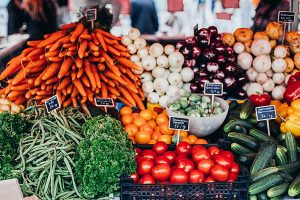
Written by Jamie Sabel, Nutritionist
Why does it seem like food labels and ingredient lists are written in morse code? We don’t know the names of half the ingredients, and the ones that we are familiar with are often disguised under alias names.
The good thing, we don’t have to worry about ingredient lists when we eat whole foods. But sometimes our schedules make it impossible to turn away from the convenience of packaged food items. Life gets busy, and we have to adapt. Packaged foods help us do just that.
When we turn to packaged foods, though, wouldn’t it feel good to be equipped with the knowledge to uncover some of the code? Understand the difference between healthy and harmful ingredients? If the answer is yes, then it means you need to understand how to read the ingredient list on food labels.
Understanding the ingredient list is crucial to know what we are putting in our bodies since there are so many unhealthy things promoting disease and uninviting symptoms. It helps us limit the number of harmful elements that otherwise creep into unseeingly “healthy foods.”
Understanding the Ingredient List
First, we need to understand that ingredients are listed from highest to lowest by weight. So, the more the ingredient is used in that recipe, the higher up it will appear on the list.
Rule of thumb: the first 3 ingredients tend to make up the majority of the product.
When looking at a product, it is best that the following do not make up the majority of the food. Therefore, when choosing a product to eat, keep from buying ones that have one or more of the following listed in the top three ingredients.
- sugar
- refined grains
- vegetable/canola oil
- partially hydrogenated/hydrogenated oil
If one of these is showing up in the top three ingredients, put it back on the shelf and keep searching.
Lastly, it is best to try to keep the ingredient list to a minimum, especially in the process or packaged food market. Try sticking with foods that have 5 ingredients or less. By doing this, it will help to avoid unnecessary additives.
Do you run often? Check this out! 5 Vital Exercises Every Runner Should Be Doing
SUGAR
Not only is sugar incredibly addictive, but it also has a high inflammatory inducing response. Sugar is also a calorie-dense food, providing little nutritional value. With that, it is best to keep sugar from the first three spots on the ingredient list of the foods you’re eating.
Avoid:
Be on the lookout for sugar disguised
as the following:
- dextrose, galactose, glucose, lactose, levulose, maltose, sucrose, mannitol, sorbitol, xylitol, beet sugar, corn sugar, corn sweetener, high fructose corn syrup, invert sugar, isomalt, maltodextrins, maple sugar, sorghum, or turbinado sugar
Also, steer clear of buying products with sugar alcohols:
- sucralose, saccharin, aspartame, acesulfame.
Approved:
Less processed sugars include:
- Honey, which contains beneficial antioxidants
- Molasses, which contains trace minerals such as calcium, potassium, iron, and magnesium
(However, neither of these should be in the top 3 ingredients).
GRAINS
I’m sure you’ve heard that we should stay away from refined grains. What makes them so bad? During the refining process, fiber is removed as well as chemicals added during techniques like bleaching. This unnatural refining process causes blood-sugar spikes and a lack of satiation.
Avoid:
Keep from buying foods with the following ingredients, all of which are types of refined grains:
- wheat flour, enriched flour, unbleached white flour, durum flour or semolina flour (all contain only the endosperm)
- Don’t be fooled! Just because it says stone ground, doesn’t mean it’s “whole grain.”
Approved:
Only buy ingredients with the word “whole” in front of the grain. For example, “whole-wheat” and “whole-grain.” That means the germ and bran have not been removed from the grain. These two parts are where all the fiber and nutrients live.
OILS
It is common for oil to be added to pre-packaged foods. However, not all oils are created equal. The processing technique, as well as the molecular make-up of the fat molecules, play an essential role in determining their healthfulness or lack thereof.
Avoid:
Unhealthy oils that are high in omega-6 fatty acids:
- soybean oil
- canola oil
- corn oil
- cottonseed oil
- sunflower oil
- peanut oil
- sesame oil
- rice bran oil
Approved:
Olive oil – okay to cook with
Avocado oil – okay to cook with
Walnut oil – good for baking
Grapeseed oil – Do Not use for cooking – cold dishes only
Flaxseed oil – Do Not use for cooking – cold dishes only
PROCESSED MEATS
It is best to avoid processed meats such as bacon, sausage, lunch meat, etc. If you are going to indulge in processed meats, please look for brands that DO NOT include Sodium Nitrite and Sodium Nitrate.
MSG – MONOSODIUM GLUTAMATE
MSG is a common flavoring agent. However, it has been associated with promoting side effects such as headache, flushing, sweating, fluttering heartbeat, and shortness of breath.
Avoid:
MSG can be disguised in the following
ingredients, so try to keep these out of the ingredient list:
- yeast extract
- hydrolyzed vegetable protein
- glutamic acid
- soy protein isolate
ARTIFICIAL COLORING
Artificial coloring is just that – artificial. These coloring contain very little to zero nutritional value. Some specific coloring agents have shown links to cancer and have even been restricted in some states (but not all). Other countries have banned them.
Avoid:
- Yellow 5
- Yellow 6
- Red 40
- Red 3
- Blue 1
- Blue 2
- Green 3
- Orange B
Hopefully now you can start to enhance your food list and knowledge of what you are buying. For more blogs like this head to our LIFT Lessons page!






